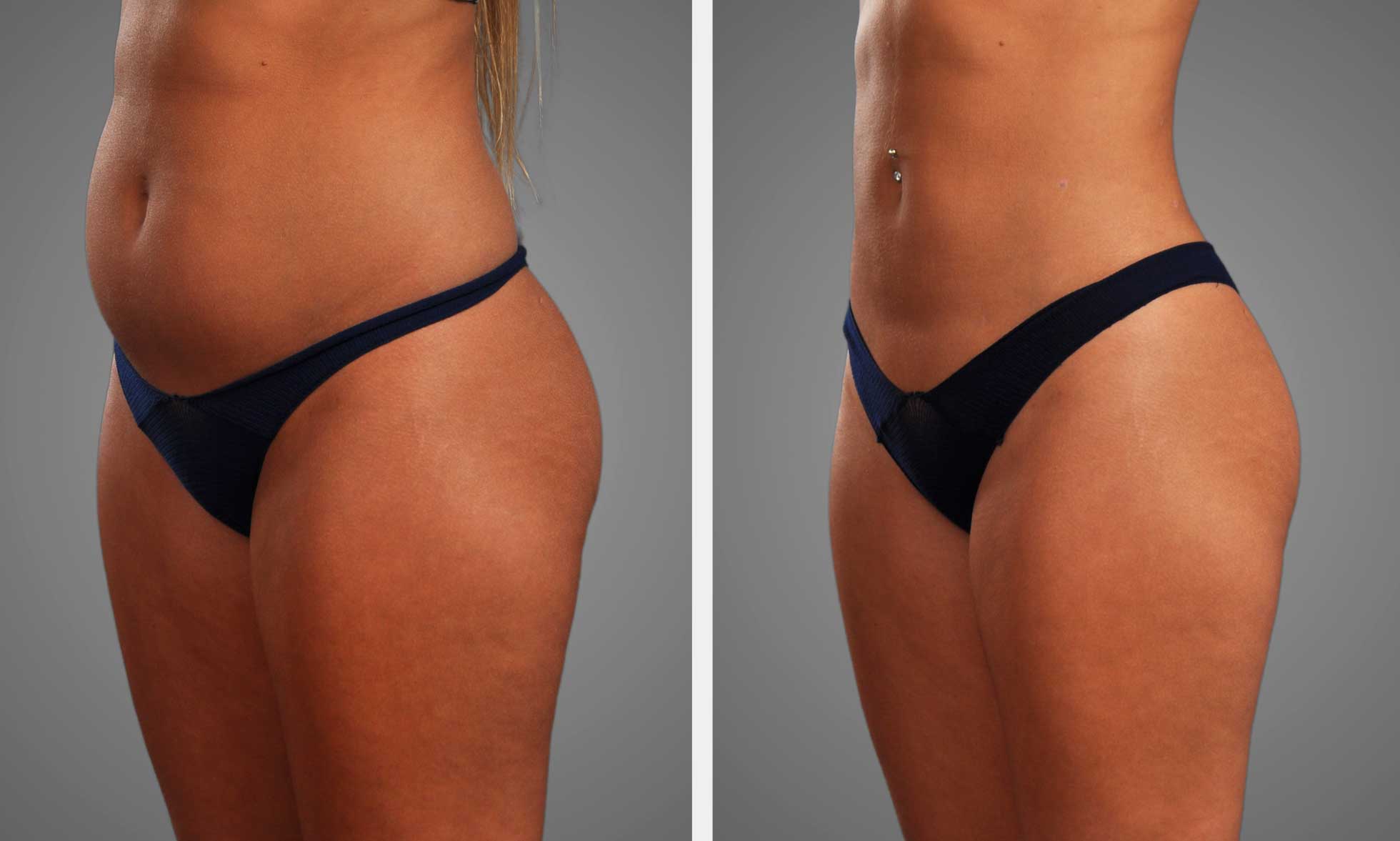Key Takeaways
- Liposuction sculpts body proportions through the targeted elimination of resistant fat deposits and is not a substitute for weight reduction. Think about it for accenting proportions when you’re close to goal weight.
- It aids in silhouette sculpting and symmetry correction, assisting to uncover natural curves and balance asymmetrical fat pockets for a well-proportioned appearance.
- Targeted reduction allows surgeons to target and remove fat from problem areas in one session — a solution for concerns such as double chin or gynecomastia.
- Eliminating excess fat gives muscle definition a chance to shine and pairs nicely with other procedures for total body sculpting. Talk combined strategies with your surgeon.
- Results are long lasting as treated fat cells do not regenerate. Stable weight and a healthy lifestyle are necessary to maintain results.
- Candidacy is based on your anatomy, skin elasticity and reasonable expectations. Adhere to preoperative evaluation and postoperative care measures to optimize safety and outcomes.
Among the liposuction body proportion benefits — such as making your body areas more balanced or improving the fit of your clothes.
It can hone in on certain areas, minimize stubborn pockets and smooth out contours for more defined silhouette lines. Results vary depending on patient anatomy, surgeon technique, and realistic expectations.
Recovery times and risks vary, so evaluation and planning direct results. The remainder of this post discusses typical benefits, candidacy criteria, and anticipated timelines.
Understanding Liposuction
Liposuction is a minimally invasive body sculpting surgery to get rid of persistent fat deposits in localized regions of the body. It attacks stubborn subcutaneous fat that won’t disappear with diet and exercise, contouring areas including the abs, flanks, thighs, hips, arms, and chin. It extracts fat cells via minimal incisions, enhancing your figure and yielding more even contours.
Clinicians must have a concise understanding of the direction and structure of subcutaneous fat in order to operate safely and achieve consistent, smooth outcomes.
Liposuction is not a method to lose weight but a means of smoothing body contours and highlighting natural proportions. Optimal candidates are typically nonobese — within approximately 30% of their ideal body mass index (BMI) — and have limited skin laxity with localized areas of excess fat.
If you’re near your ideal weight but want proportions brought into equilibrium—say by minimizing disproportionate hip fullness or evening out a persistent lower-abdomen bulge—liposuction can make your shape look more balanced without significant changes in total weight.
Technique selection influences results and complications. Techniques are dry, wet, superwet and tumescent. Tumescent liposuction utilizes large volumes of fluid with local anesthetic, and lidocaine doses up to approximately 55 mg/kg have been shown to be safe in that setting.
Other options are energy-based lipolysis devices that disrupt adipocytes and fat transfer, which relocates harvested fat to another area to achieve better proportion, like boosting the booty or addressing contour defects. High-volume liposuction or multiple areas may be done under general anesthesia to permit IV fluids and reduce the risk of hypotension.
The surgery involves incisions, from which cannulas suction out fat. Care is standard with a brief clinic or hospital stay for observation—usually only a few hours—and then sending you home with someone to drive and sleep over.
Stopping smoking at least a month prior to surgery is crucial to reduce wound-healing complications and to diminish risks like DVT and PE.
Recovery patterns are predictable: bruising usually clears in one to two weeks, while swelling can last several weeks. Scars generally fade over months. Over the next few months, as the healing settles and swelling resolves, the treated areas look slimmer.
Patients should arrange to have no strenuous activity for a few weeks, and follow surgeon advice on compression garments and gradual re-introduction to exercise. Knowing what to expect, choosing the right patient, choosing the right technique, is the secret to safe, natural, proportionate results.
Proportional Benefits
Liposuction optimizes proportionality by extracting certain, localized fats resistant to treatment to restore balance to body ratios. It attacks those areas that refuse to budge with diet or exercise, softening curves and bringing back aesthetic harmony. The outcome can be a more balanced silhouette with more defined muscle striations and a more stable sense of body symmetry.
1. Silhouette Sculpting
Liposuction carves the body by extracting fat and contouring key areas like the waistline, thighs, and abdomen. New methods allow surgeons to sculpt nuanced shapes and highlight inherent curves instead of just subtracting volume. The process sculpts body lines for a sleeker silhouette and sculpted physique, frequently exposing shape that working out alone could not.
Common treatment areas for silhouette sculpting include:
- Stomach (abdomen)
- Hips and flanks
- Upper thighs (outer and inner)
- Back and bra rolls
- Chin and neck
2. Symmetry Correction
Liposuction can fix body shape that is asymmetrical from uneven fat deposits or previous surgeries, balancing each side. Targeted removal from one flank or one thigh can equalize the other side and bring things back into balance. This better symmetry enhances both the aesthetic balance and can alter the way your clothes fall and how your posture presents.
Targeted symmetry correction benefits are better posture, increased grace, easier clothing fit and elimination of catch-eyes caused by uneven bulges.
3. Targeted Reduction
Liposuction eliminates those fat deposits that just won’t go away with diet and exercise, providing spot treatment for problem areas. It enables targeted fat removal from multiple locations during a single treatment, ideal for individuals seeking widespread but concentrated transformation. Targeted reduction is not exclusive to women; it applies to men, with gynecomastia and submental reduction being very common.
Comparison table:
| Method | Best for | Effectiveness vs lipo |
|---|---|---|
| CoolSculpting | Small bulges | Less precise, gradual |
| Kybella | Submental fat | Non-surgical, limited area |
| Exercise/Diet | Overall fat loss | Broad, not spot-specific |
| Liposuction remains more direct and immediate for targeted volume removal. |
4. Muscle Definition
Stripping away that top layer of fat exposes muscle lines and increases tone perceived. Much better for those who want an athletic, toned look and not an extreme muscle gain. Liposuction is frequently combined with abdominoplasty or breast lift to achieve more comprehensive sculpting effects.
The parts that respond best to the definition style muscle are your abs, arms and chest.
5. Lasting Shape
Fat cell removal is permanent because once fat cells are treated, they don’t come back, but weight fluctuations can shift remaining fat around. Stable weight, diet, and exercise are essential to preserve results.
Postoperative care generally involves the use of compression, a slow return to activity, and follow-up visits to help support your recovery and maintain your new contour.
Beyond The Physical
Liposuction always gets positioned as a beauty solution, yet its impact goes beyond skin and fat. After the procedure, many experience real gains in psychological well-being. We know from studies that almost 80% of patients report their general quality of life as improved. More than 85% observe increased body-related self-esteem, and roughly a third experience a significant increase in general self-worth.
These figures suggest something beyond just a makeover — they indicate a change in the day-to-day mood. Enhanced body confidence shapes how individuals navigate the world. When patients are comfortable in their bodies they participate in activities they had previously shunned, such as swimming, group classes, or hiking excursions.
That change can be practical: someone who skipped beach outings now goes, someone who wore loose clothes to hide a shape starts trying new styles. Such small deeds accumulate and tend to result in deeper social connection and a more profound sense of belonging. Emotional relief is yet another common result.
They feel less self-conscious about their appearance following liposuction. For others, depressive symptoms abate — not because surgery addresses mental illness directly, but because a chronic cause of shame or stress is eliminated. This relief can liberate psychic room for other objectives, such as new hobbies or career moves, that then feed back into mood and meaning.
Motivation to stay fit has a tendency to increase post liposuction. Patients report to providers they’re more motivated to guard their outcomes. Easy swaps — like replacing candy with fruit, taking a 10-minute walk each day, or experimenting with a fitness class — have a huge impact on your future self.
These small lifestyle changes are simpler to sustain when the early encouragement of enhanced contours exist. What’s interesting about these studies is that they find many patients hold higher body satisfaction and self-esteem months to years later, long after surgery, indicating a lasting behavior and mindset shift.
Specific examples demonstrate how advantages accumulate. Perhaps one will leverage new confidence to join a local sports league, getting fresh exercise and social interaction. One might streamline their work wardrobe shopping, which can impact professional presence and opportunity. The process can be a gateway, not a termination.
Liposuction is not an automatic solution for deep psychological problems, and realistic expectations are crucial. Paired with caregiver support, defined objectives, and positive behaviors, the procedure can alleviate physique-related distress, increase self-assurance, and catalyze sustainable behavior change.
Anatomical Considerations
Our unique anatomy informs the selection of liposuction approach as well as the anticipated outcome. Skin elasticity and strength differ based on age, genetics, sun exposure, and smoking history. Bad skin tone and poor elasticity, which is more frequent in older patients, results in suboptimal skin draping following fat removal and increased dissatisfaction.
Central, peripheral or mixed fat distribution directs planning. Because fat cells are removed from a treated area, the ability to store fat there is decreased, which typically results in long-lasting contour change and high patient satisfaction. However, further investigation is required regarding the potential for local reaccumulation or compensation to untreated areas.
Tissue and underlying muscles also matter for safe, effective sculpting. Dense fibrous tissue or prior scarring adds resistance to cannula passage and can necessitate varying cannula sizes or motion patterns. The cannula is the part of the aspirate system that provides the most resistance to flow, so selection of diameter and port design impacts efficacy and trauma.
Evaluating muscle tone and any hernias is key, particularly in the abdomen, as weak fascia would need repairing to prevent contour irregularities or complications. Some body areas require customized treatments due to special vascular, nerve and skin properties.
The abdomen can have thicker adipose tissue but variable skin laxity around the incision. Its central compartments by the major vessels require cautious depth control. The chin and neck include thinner skin and delicate vascularity, thus fine cannulas and careful superficial liposuction techniques are typical.

Sites with thicker skin, such as the back, can withstand more aggressive fat debulking whereas thin-skinned regions are prone to visible undulations if overtreated. Perioperative and patient factors guide timing and technique. Weight stability for 6 to 12 months prior to surgery is recommended to maintain results and minimize complications.
Wet solution is infiltrated and a 15- to 30-minute wait for maximal vasoconstriction and local anesthesia reduces bleeding and enhances comfort. In obese patients presenting for surgery such as tracheostomy, colostomy or urostomy, liposuction can decrease excess adiposity at surgical areas to facilitate access and fit.
Harvested fat can be lipofilled for breast reconstruction, burn repair, or scar amelioration as adult adipose-derived stem cells reside in the graft, providing reconstructive advantage. Key anatomical factors that impact outcomes are summarized below.
| Factor | Why it matters | Practical implication |
|---|---|---|
| Skin elasticity | Determines ability to retract after fat removal | Older or sun-damaged skin may need combined skin tightening |
| Fat distribution | Guides volume and location of aspiration | Focal vs diffuse patterns change cannula strategy |
| Tissue fibrosis/scar | Increases resistance to cannula | Use larger or varied cannulas; slower technique |
| Vascular anatomy | Risk of bleeding and hematoma | Superficial vs deep layers chosen carefully |
| Underlying muscle/fascia | Structural support for contours | Repair or reinforce when needed |
| Cannula resistance | Affects flow and trauma | Select cannula size to balance efficiency/safety |
The Artistic Element
Top plastic surgeons add an artistic element to liposuction — sculpting natural contours and harmonious proportions, not just extracting fat. It is a keen understanding of the directionality and structure of subcutaneous fat that informs this work. Fat lays in cushions with specific characteristics – and understanding which layer to target first influences not only immediate shape but lasting texture.
Research demonstrating that genes are responsible for as much as 70% of your body shape allows surgeons to set realistic targets and customize treatment plans so outcomes complement a patient’s natural structure. Surgeons address the deep fat layer initially. This is the layer that contains the majority of loosely organized fat, and excising it establishes the fundamental volumetric shift.
Working here requires steady hands and careful judgement, for excessive subtraction produces hollows difficult to repair. Working deep fat first assists in laying down the skeletal framework that the superficial layer will subsequently sculpt. The superficial fat layer is thinner and denser, and it is typically treated second to support skin retraction and surface smoothing.
Carving this stratum is more subtle art. Small, targeted sweeps of the cannula polish transitions and prevent borders from developing. This shallow work is where the artistic element becomes most apparent — nuanced tweaks here alter how light and shadow fall across the body, resulting in a more lifelike appearance. Each stride is in an individualized training plan.
We start off with measurements, before and after photos, lifestyle and goal discussion. Surgeons mix that information with a knowledge of tissue response and genetic boundaries to sketch out treatment areas. Planning frequently reveals where those slight trims will provide the most balanced feel—hips to waist, inner to outer thigh, or abdomen to flank.
Examples: a modest removal at the flanks can dramatically improve waist definition, while careful smoothing of the anterior abdomen can prevent a “scooped” appearance. The how goes from strategy to detailed implementation. Marking the patient in standing position reveals natural hang and contours.
Anesthesia selection impacts tissue turgor and access. Deep layer work, then reconsideration and shallow polishing. Final contouring consists of cross-checks from multiple angles and little symmetric touch-ups. Postoperative care and patience matter: full results can take up to a year as swelling resolves and skin contracts.
Surgeons who combine technical expertise with the long term vision preside over mending and recalibration of hope. Liposuction has improved since the late ’70s with improved instruments and technique that increase the artistry. These small decisions in planning and treatment accumulate, since every little bit matters in the final look.
Candidacy Assessment
A candidacy assessment sets the frame for whether liposuction will deliver the intended proportion improvements. This starts with matching patient anatomy to realistic outcomes and ends with medical safety checks. Clear criteria and a focused exam let both clinician and patient see what is likely and what is not.
Best candidates are adults, at or near their goal weight with localized fat deposits and good skin elasticity. Most successful results are in nonobese patients with limited skin laxity and minimal to moderately redundant fatty tissue. Practically this translates to being within 30% of their typical BMI or 10-15 pounds of their target weight.
Examples: a patient with a BMI of 26 who wants flank reduction, or a patient 8 pounds above goal with stubborn inner-thigh fat, will generally see clearer contour changes than someone with high generalized obesity.
A thorough evaluation includes medical history, focused anatomy review, and aligned aesthetic goals. Medical history should flag comorbidities like coronary artery disease, diabetes, or clotting disorders that raise risk. Review of prior surgeries and scars helps plan access points.
The anatomy exam gauges fat distribution, skin tone, and tissue elasticity. Poor elasticity predicts residual sagging after volume removal. Discussed goals must be realistic: liposuction reshapes and reduces focal fat, but it does not provide weight loss, treat loose skin, or erase cellulite.
Use before-and-after photos of similar body types to set expectations. Safety, boundaries have to be clear. The amount of fat that can be taken out at a time is usually restricted to approximately 5 liters. Larger-volume liposuction, operations exceeding six hours, multiple major surgeries combined, or high-risk comorbidities generally necessitate overnight observation.
Patients with elevated BMI or who require very large-volume removal are frequently guided to staged treatments or alternative approaches to minimize perioperative risk. Practical checklist for candidacy: stable weight for several months, BMI within a reasonable range (ideally within 30% of normal), localized fat deposits, firm skin elasticity, non-smoker or willing to stop smoking, and general good health.
Smoking cessation for wound healing and to reduce complications should begin no fewer than 4 weeks prior to surgery. Advise patients on realistic expectations, downtime, and continued healthy behaviors to maintain results.
Conclusion
Liposuction can sculpt body curves and enhance your clothing fit. It cuts connected fat, points to more defined borders and assists in harmonizing one region with the remainder of the body. Scans and measurements direct decisions. Surgeons sculpt with an aesthetic sense of proportion and anatomy. Recovery and realistic goals are important. Emotional rewards are downstream from physical transformation, yet these outcomes demand nurture by nutrition and consistent exercise. Good candidates maintain stable weight and anticipate transformation, not a healing for an ailment. Consult with a qualified surgeon, examine before/after photos and balance hazards versus probable rewards. Want to know more or schedule a consult? Contact a board-certified clinic for a customized plan and what’s next.
Frequently Asked Questions
What is liposuction and how does it improve body proportion?
Liposuction is a surgical procedure that removes localized fat reshaping areas. It sculpts and harmonizes body proportions by eliminating resistant fat deposits that neither diet nor exercise can completely control.
Which body areas benefit most for proportion after liposuction?
Common areas: abdomen, flanks (love handles), thighs, hips, arms, and chin. Treating multiple areas can help craft smoother transitions and a more balanced silhouette.
How long before I see proportional results?
You’ll see changes from week to week. Final shape emerges once swelling dissipates at 3–6 months. Complete tissue settling can last up to 12 months.
Will liposuction help me lose weight?
Liposuction is not for weight reduction. It eliminates localized fat to enhance contours. Stable diet and regular exercise are required to maintain the results.
What factors determine if I’m a good candidate?
Ideal candidates for the procedure are close to a stable, healthy weight, have realistic expectations and goals, good skin elasticity and no major medical risk factors. You should be evaluated by a board-certified plastic surgeon.
Can liposuction fix uneven proportions caused by muscle or bone structure?
No. Liposuction takes away fat, it does not alter bone structure or muscle bulk. Surgeons often combine procedures or suggest targeted exercise for balance.
What are common risks and how can I minimize them?
Complications consist of infection, asymmetry, contour deformities, and transient paresthesia. Mitigate dangers with an expert, board-certified surgeon and a commitment to pre- and post-op directions.

















































